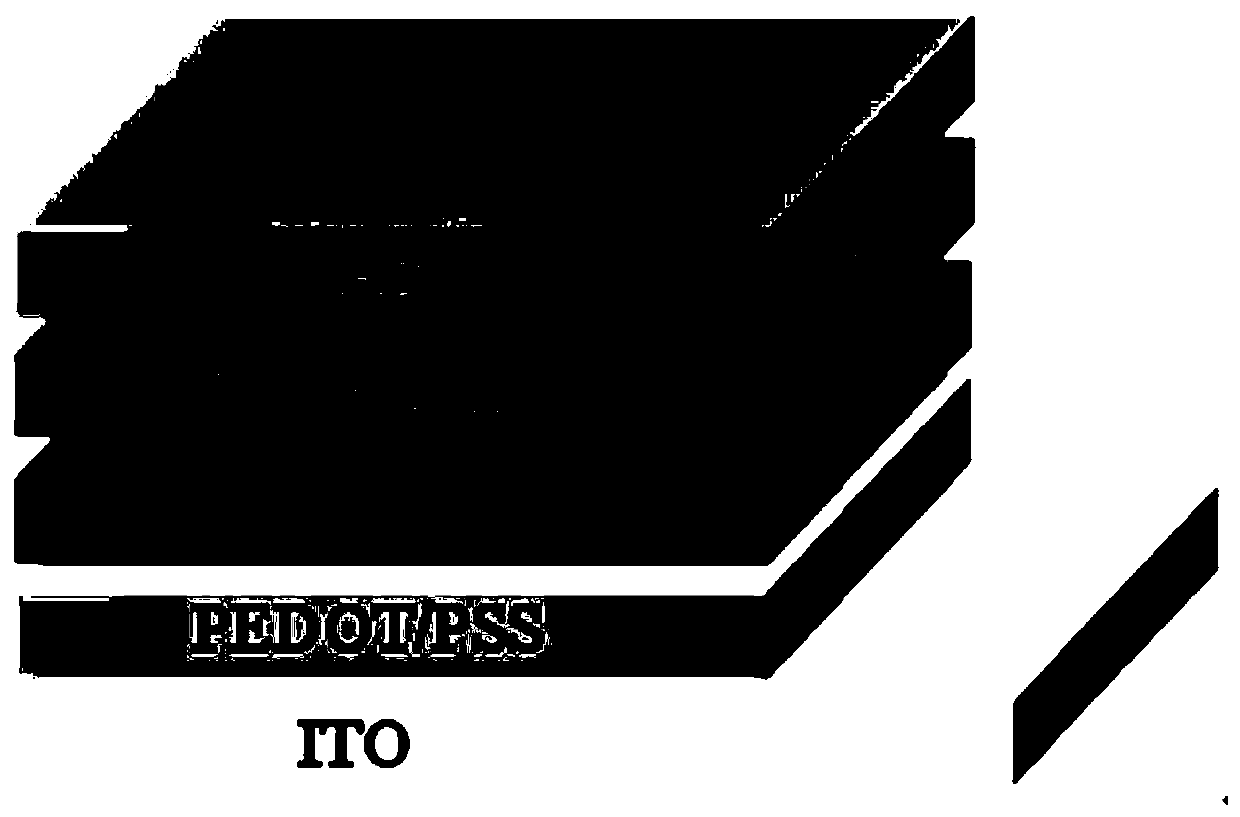Photovoltaic device containing pyridine polymer
A technology of photovoltaic devices and polymers, applied in photovoltaic power generation, electric solid-state devices, semiconductor devices, etc., can solve problems such as poor ductility and poor stability, and achieve huge application value and development potential, good self-assembly and stability, Effect of high electron transport performance and light transmission
- Summary
- Abstract
- Description
- Claims
- Application Information
AI Technical Summary
Problems solved by technology
Method used
Image
Examples
Embodiment 1
[0052] 2-vinylpyridine was passed through a basic alumina column to remove free radical inhibitors, and dicyclohexyl azo was recrystallized from ethanol and dried for later use. 2-Ethylpyridine (30 g, 0.285 mol) was added to a dry reaction flask, 30 mL of DMF was used as a solvent, RAFT reagent (0.16 g, 0.43 mmol) and dicyclohexyl azo (21 mg, 0.086 mmol) were used as initiators. The reaction bottle was refrigerated and evacuated three times for nitrogen exchange (-196°C, 0.01mmHg, the operation method of the freeze evacuation and nitrogen exchange steps in the subsequent examples is the same as this example), to remove oxygen, and then heated in an oil bath under the protection of nitrogen to 75°C for 22 hours. After the reaction, cool to room temperature, precipitate the reactant into cold diethyl ether (0° C.), collect the solid polymer, redissolve, precipitate, filter, and dry to obtain the polymer.
Embodiment 2
[0054] 2-vinylpyridine is passed through a basic alumina column to remove free radical inhibitors, and dicyclohexyl azo is recrystallized from ethanol (the solvent is volatilized after heating and dissolving to obtain a recrystallized and purified initiator), dried and used for later use. 2-Ethylpyridine (30 g, 0.285 mol), 30 mL of DMF, RAFT reagent (0.47 g, 1.29 mmol) and dicyclohexyl azo (63 mg, 0.258 mmol) were added as initiators in a dry reaction flask. The reaction bottle was refrigerated three times and replaced with nitrogen to remove oxygen, then placed in an oil bath and heated to 75°C under the protection of nitrogen, and reacted for 22 hours. After the reaction, cool to room temperature, precipitate the reactant into cold ether, collect the solid polymer, redissolve, precipitate, filter, and dry to obtain the polymer.
Embodiment 3
[0056] 2-Vinylpyridine was passed through a basic alumina column to remove free radical inhibitors and dried for later use. Add 2-ethylpyridine (1.0 g, 0.0095 mol) and 5 mL THF (that is, solvent tetrahydrofuran) into a dry reaction flask. The reaction bottle was refrigerated three times and evacuated for nitrogen to remove oxygen. Then, under the protection of nitrogen, tert-butyllithium (360 μL, 0.16M) was added and reacted for 20 hours. After the reaction, cool to room temperature, precipitate the reactant into cold ether, collect the solid polymer, redissolve, precipitate, filter, and dry to obtain the polymer.
PUM
| Property | Measurement | Unit |
|---|---|---|
| Thickness | aaaaa | aaaaa |
| Thickness | aaaaa | aaaaa |
| Thickness | aaaaa | aaaaa |
Abstract
Description
Claims
Application Information
 Login to View More
Login to View More - R&D
- Intellectual Property
- Life Sciences
- Materials
- Tech Scout
- Unparalleled Data Quality
- Higher Quality Content
- 60% Fewer Hallucinations
Browse by: Latest US Patents, China's latest patents, Technical Efficacy Thesaurus, Application Domain, Technology Topic, Popular Technical Reports.
© 2025 PatSnap. All rights reserved.Legal|Privacy policy|Modern Slavery Act Transparency Statement|Sitemap|About US| Contact US: help@patsnap.com



